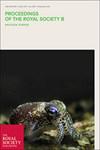Non-mitochondrial calcium ion regulation in rat ventricular myocytes.
Proceedings of the Royal Society of London Series B-Containing Papers of Abiological Character
Pub Date : 1989-02-22
DOI:10.1098/rspb.1989.0012
引用次数: 10
Abstract
Ca2+ exchange has been measured in a suspension of rat ventricular myocytes treated with digitonin or saponin to render the sarcolemma permeable to small molecules and ions. Two fractions of exchange were identified, one that was attributed to the mitochondrial component of the cell and the other to a non-mitochondrial fraction. Mitochondrial Ca2+ uptake was blocked by sodium azide and depended on respiratory substrates whereas non-mitochondrial uptake occurred independently of these molecules but was dependent on ATP and creatine phosphate. Non-mitochondrial Ca2+ uptake could be induced at a Ca2+ concentration below 1 um and the initial rate increased with concentration up to 100 um Uptake could be reversed by sulmazole (a caffeine-like substance) and this reversal in turn inhibited by ryanodine. These properties suggest that the major locus for non-mitochondrial Ca2+ exchange is at the sarcoplasmic reticulum. Ca2+ exchange could be modulated by a number of agents, including carnosine, but was unaffected by others, including Na+, inositol trisphosphate and cyclic AMP. A kinetic model of the data is presented, which incorporates similar data of Ca2+ uptake into the mitochondrial fraction. The rates of Ca2+ exchange measured in these experiments suggest that these two components of the cell can reduce the sarcoplasmic Ca2+ concentration rapidly enough to account for the observed transient nature of the isometric twitch. Furthermore, it is suggested that both non-mitochondrial and mitochondrial fractions of the cell could significantly contribute to tension relaxation in rat cardiac muscle.大鼠心室肌细胞非线粒体钙离子调控。
在大鼠心室肌细胞的悬浮液中测量了Ca2+交换,这些悬浮液用洋地黄皂苷或皂苷处理,使肌膜对小分子和离子具有渗透性。鉴定了两个交换部分,一个归因于细胞的线粒体成分,另一个归因于非线粒体部分。叠氮化钠阻断线粒体Ca2+摄取并依赖于呼吸底物,而非线粒体摄取独立于这些分子发生,但依赖于ATP和磷酸肌酸。Ca2+浓度低于1 μ m时,诱导非线粒体Ca2+摄取,当Ca2+浓度达到100 μ m时,初始速率增加。摄取可以被磺胺唑(一种类似咖啡因的物质)逆转,而这种逆转反过来又被瑞诺定抑制。这些特性表明,非线粒体Ca2+交换的主要位点在肌浆网。Ca2+交换可以被包括肌肽在内的许多药物调节,但不受其他药物的影响,包括Na+,三磷酸肌醇和环AMP。提出了数据的动力学模型,其中包含了线粒体部分Ca2+摄取的类似数据。在这些实验中测量的Ca2+交换率表明,细胞的这两种成分可以迅速降低肌浆Ca2+浓度,足以解释观察到的等长抽搐的短暂性。此外,该细胞的非线粒体和线粒体部分都可以显著促进大鼠心肌的紧张松弛。
本文章由计算机程序翻译,如有差异,请以英文原文为准。
求助全文
约1分钟内获得全文
求助全文
来源期刊

Proceedings of the Royal Society of London Series B-Containing Papers of Abiological Character
生命科学, 发育生物学与生殖生物学, 发育生物学
自引率
0.00%
发文量
0
审稿时长
1 months
 求助内容:
求助内容: 应助结果提醒方式:
应助结果提醒方式:


